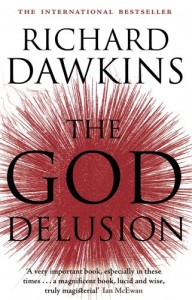What’s after Post-Modernism?
– Charles Taylor’s take on contemporary secularism
How can we connect the Gospel to a culture that has rejected the transcendent – a culture that lives in the closed room of materialism & hyper individualism?
“A culture not dedicated to the sacred has only
Itself to take as object, the self becomes sovereign”
Robert Coles[1]
Peter Corney (2021)
Introduction
In 1995 at the Lausanne Emerging Leaders Conference in Melbourne, I gave an address on “Post Modernism” that seemed to resonate with the young Christian leaders gathered at that conference! That is 25 years ago now and there is no question that the cultural trends emerging then have had a transforming impact on our culture and people’s attitude to Christianity and the church. If evangelism was becoming more challenging in the 90’s it is even more difficult now in 2021. These cultural changes coupled with the uncovering of child abuse in Christian institutions has accelerated the marginalising of the Church and Christianity in Australian society and reinforced the growth of a new and more aggressive secularism in our culture.
This paper, like the one I gave in 1995, is an attempt to understand the new mindset that lies behind contemporary secularism that is now so ubiquitous that we might say it is the default mental framework of most people.
In 1995 I quoted the late German theologian H. Thielicke – “The Gospel must be constantly forwarded to a new address, because the recipient is repeatedly changing his place of residence”. This is an attempt to understand people’s new mental address.
The influence of ideas
Many social and philosophical forces have fed into where we are now, not the least being the powerful influence of ideas that might be loosely described as “Post-modern” and their take up in many university departments since the 70’s.
As James K A Smith says “We are philosophical heirs even if we don’t realise it! We have inhaled invisible philosophies in the cultural air we breathe. Our everyday quest for authenticity and identity are grooves in the heart laid down by an Existentialism we’ve perhaps never heard of.” [2]
But Post-modernity was never just a philosophical movement. It was as much a socio-economic movement as it was one of ideas emerging out of post WW2 European existentialism. It is a kind of “hyper modernity”, a mix of Pop culture, marketing and modern media, Western prosperity and the growth of multiple-choice consumerism and unregulated free market economics – all on steroids!
The Post-modern cultural vibe also has within itself an inherent contradiction. It champions individual choice and the subjective authority of my personal perspective over all claims to objective truth, and it encourages a critical suspicion and cynicism about all large narratives of meaning like Christianity. And yet, it is itself manipulated by consumerism, the electronic media, marketing, and pop culture! The advent of the “Smart phone” in 2009 (Just 12 years ago) and social media has accelerated and magnified this contradiction for a whole generation. This position leads inevitably to a narcissistic obsession with the self and a view of personal authenticity that is highly vulnerable, particularly among young people. [3]
One writer who stands out among contemporary thinkers on “Secularism” and the contemporary mind and world view is Charles Taylor [4] and the thoughts in this paper are heavily influenced by his ideas and rather original terminology.
I have also used James K A Smith’s extremely helpful introduction and critique of Taylor’s work “How (not) to be secular – Reading Charles Taylor.” Smith describes Taylor’s work as a “cultural anthropology for urban mission”.
The Contemporary mental landscape – or what todays secularism looks like
First to explain some of the terminology used in this paper:
- “Secular / secularism” A modern definition of the secular is areligious, neutral, particularly in relation to religious belief, as in the “secular public square.” Secularism is the view that in a pluralist democracy public institutions like government schools etc, are to be areligious. This is roughly equivalent to the French doctrine laicity a clear separation of Church and State. Taylor’s notion of the secular is the idea of an age of contested belief where religious belief is no longer axiomatic but where it is easier to not believe.[5]
- “Plausibility Structure” What the majority of people find believable or unbelievable at a particular point in a culture’s history.
- “Immanence” The idea that “reality” is restricted to the physical material world. All meaning and significance is restricted within the material physical world. (Note comment on this in (e) below*)
- “Materialism” The philosophy that underlies immanence. There is only the physical and material, there is no metaphysic, nothing beyond or bigger than the physical / material. Sometimes referred to as “the windowless room”, brightly lit but firmly closed to the transcendent.
- “Transcendence” The idea that reality is open not just enclosed within the material physical world. Open to truth and meaning from beyond, open to the divine and spiritual. These aspects of reality penetrate the material and natural and can be experienced through them. They can also be experienced through art, music, literature, poetry, worship, and religious experiences.
(* Taylor also maintains that while contemporary people have a view of reality that is predominately immanent it is, he says, “a haunted immanence”. They still have longings they can’t explain or satisfy. [6] It is often referred to in contemporary literature and film. Julian Barnes the UK author says, “I don’t believe in God, but I miss him!”)
A picture that is helpful to understand the contemporary attitude to transcendence is to imagine a crowd at the Melbourne Tennis Centre watching a riveting game at the Australian Open. The roof has been open to the night sky but the officials have become aware that rain is on the way and so they have slowly closed the roof. No one notices because the game is so exciting and pre-occupying. At the end of a tight set, in the break you look up, but you can no longer see the heavens. You cannot even remember if the roof was open when the game started!
The process of “closing the roof” has been a gradual one in Western culture going back to the industrial revolution and the beginnings of “modernity” in the early 19th century. This will be explained further below.
- “Exclusive humanism” (or “autonomous humanism”) Where all meaning and significance are accommodated within us and without any recourse to the divine or transcendent. Where the individual is the sovereign and sole authorising agent as to meaning, value and truth.
- “Imaginary” Our mental framework, world view, habit of thinking, our ‘plausibility structure’.
- “Modernity and post-modernity” One way of understanding these terms is to examine the change in the relationship between the individual and society and the location of “authority” in Western culture. This is of course a gradual and uneven process. The following chart describes the process.
The changes in the relationship between the individual and society and the location of “authority” in Western cultures.
| Pre -modern | |||||||||
(Traditional)
|
|||||||||
| Community
Individual
|
|||||||||
Taylor contrasts the pre-mod and the mod mental frameworks in the following way.
He says the pre-modern imaginary is shaped by three main ideas:
- The natural world is a sign that points beyond itself to what is more than nature.
- Society is grounded in a higher reality; earthly kingdoms are grounded in a heavenly kingdom.
- People live in an ‘enchanted’ world that is open and vulnerable to spiritual realities, it is charged with “presences”. This is the world of C.S. Lewis, J.R. Tolkien, Charles Williams, and the “Inklings”. It is the source and explanation of our “longings” [7] A world open to and aware of the transcendent, “spiritually porous” to use Taylor’s phrase.
This view of reality has been changed by the modern world by a range of forces both philosophical, scientific, technological, social, and economic. One of the ways this has happened is by what Taylor calls a “subtraction story” – what is left when you take away transcendence. This narrative is embedded in secularist theory. The narrative goes like this [8]. “Once we believed in fairies, ghosts and spirits and God, but as we grew up and became more rational and discovered natural explanations for the world and reality, we left these superstitions behind.” This is the idea that the discoveries of the Natural Sciences exorcised superstitions.
In challenging the “Subtraction Theory” we need to keep in mind that this closed immanent framework is a presupposition or assumption arising from a “belief” that the transcendent is just a superstition. This is a position that the materialist reasons from not just to!
To use Taylor’s phrase “it’s the illusion of rationale obviousness” stemming from the secularist subtraction stories they tell themselves – the narrative about growing up and coming of age and leaving the myths and enchantments of childhood for the reality of adulthood. [9]
In contemporary Christian apologetics Taylor encourages us to recognise what he calls “the three fields of cross pressure”.
- The field of Agency. The sense that many people have that we are not just determined by genes and socialisation but that we are as individuals, active creative agents.
- The field of Ethics. We have higher spiritual and ethical motives that don’t just reduce to biological instinct or base drives.
- The field of Aesthetics. Art, nature, beauty move us because we have an innate sense of meaning. Our responses are not just to pleasure or stimuli – merely chemical reactions.
These are areas of existential ambiguity and uncertainty for many despite the “subtraction stories” told by the materialists.
Most people don’t live in the confident camps of belief or unbelief – “the dogmatic zones”, but in the “cross pressured” no-man’s land in between.
Therefore, with some exceptions, it means traditional apologetic wars and weapons may not be effective for many people. (e.g., The Richard Dawkins vs John Lennox or Daniel Dennett vs William Lane Craig debates)[10]
For some people tapping into existential cracks in our quest for meaning and purpose and the “pains of existence”[11] may be more fruitful. To quote the late Leonard Cohen’s ballad, “there’s a crack in everything, that’s how the light gets in.” [12]
James KA Smith summarises Taylor’s view in this way; “Taylor suggests that those who connect to unbelief because of science are unconvinced by data and more moved by the form of the story that science tells and the self-image that comes with it – rationality = maturity… If Taylor is right it seems to suggest that the Christian response to such converts to unbelief is not to have an argument about the data or evidence’s but rather to offer an alternative story that presents a more robust, complex understanding of the Christian faith.”[13] Smith suggests that the faith they have left has often been worth leaving because it was over simplistic, shallow, and untaught.
There are also those who find the world of modernity with the removal of the transcendent aspect of reality a very “flattened space”, a very mechanistic and utilitarian place. These people are often drawn to the arts and the aesthetic. Edward De Bono the English Philosophical populariser has connected to this group with his ideas of Art galleries being the new Cathedrals, the new “Sacred spaces”. This is an attractive idea to some, and it also has the added attraction of no ethically demanding attachments that religious faith has. Others in this group will be drawn to some forms of environmentalism that offers a kind of “spiritual ecology” based on the idea of “holism” or Pagan notions of spirituality. Recent surveys of young people show a significant percentage are interested in some spiritual entity or dimension to reality. [14]
Taylor also develops the idea of what he calls “the buffered (or bounded) self” as a significant change in the modern persons mental framework. The contemporary persons capacity to generate or understand the meaning and purpose of life is now more isolated and restricted to the individuals interior subjective and limited resources. All exterior sources and authorities, including the transcendent, are suspect and so are either rejected or subject to the individual’s authority.
Taylor says that because of the disenchantment of the natural world there has been a shift in the location of meaning from the physical outer world into the mind and emotions – the inner world of the individual.
Meanings are now generated within the individuals mind and imposed on things by our minds and emotions– not just understood or perceived by the process of our minds – but imposed by us from within the subjective autonomous self. Meaning is now located subjectively, there is no objective meaning in things – meaning is located solely in us as agents.
This is of course what Post-Modern subjectivism and perspectivism under the philosophical influence of existentialism has reinforced.
In contrast to this the pre-modern self was porous, open to the beyond, the supernatural, the divine, the transcendent but this phase has now gone with the disenchantment of the world.
Now modern minds are bounded enclosed, inward spaces, not porous. They are (“buffered”) isolated in their interiority and subjectivity. This has produced what Taylor calls an “exclusive or autonomous humanism” that makes atheism ‘normal’. (But we need also to keep in mind Taylors other observation that they are still “haunted” by the transcendent.)
Two other tendencies in contemporary’ attitudes reinforce this condition, what Taylor calls:
- “Expressive individualism” – the assumption that each of us has his or her own autonomous way of reaching our full humanity and that it is important to discover and live this out without conforming to some idea or norm imposed on us from outside us. Such as parents, school, Church, and social norms like gender stereotypes. (This process is sometimes referred to as “self-realisation” in pop psychology)
- “The age of authenticity” – The only authentic spirituality is what “speaks to me”. This is a spirituality that is de-institutionalised, disconnected from family or Church or social norms and completely individualised. It is suspicious of all other “authorising agents” and formal frameworks of meaning – theological, political, communal, or institutional. The primary value is free choice, and so tolerance is the second important value. These two are the last remaining virtues. Anyone who challenges the validity of a particular choice, either on the grounds of truth or some other moral framework, is guilty of intolerance.[15] So in this mental framework “subjective authenticity” trumps all other forms of knowledge or external authority.
Where the ‘new spirituality’ does emerge David Tacey the La Trobe sociologist describes it in this way: “The new spirituality is existential rather than credal,…it grows out of the individual person from an inward source, is intensely intimate and transformative and is not imposed upon the person from outside authority or source.”[16]
Taylor also maintains there has been a change in what he calls “the social self.”
As we observed earlier the pre-modern world was communal, the authority of the community was greater than the individual’s authority. Also, the stability and unity of the community was of higher importance than the individual. So, belief or disbelief has social consequences. If belief was the norm, then the social pressure was to believe, to conform. That pressure is now reversed.
The change to greater individualism also has the potential to “atomise the society”. With fewer shared values diversity must be valued above previous common values. Tolerance of difference becomes important to sustain stability in the society. Post modern pluralist liberal democracies have also coincided with greater migration and people movement from one culture to another around the world. To sustain social stability modern democratic governments, have promoted ideas like “multi-culturalism” and the value of cultural diversity. So “individual rights” and tolerance of differences become critical.
The declaration of human rights was a post-World War II action by the UN in 1948, but its promotion has taken on even greater significance in our time in what were already liberal and pluralist democratic systems like Australia, the UK, Canada, the US, and W. Europe.
The promotion of human rights and the growth of post-modern individualism has also influenced another major cultural change that has enabled and encouraged the exploration of “rights awareness” in relation to gender. This has created a new public challenge to what had been a long existing private issue around questions of inclusion and equality. The issue of race and discrimination has also taken on a new heightened awareness.
These challenges have had obvious benefits for a variety of individual human rights in the creation of new legal protections in pluralist Western democracies.
But “hyper individualism” has the tendency to the atomising of society and also brings other challenges.
For example:
- The idea of the “common good” becomes more contestable
- The process of community debate becomes more heated, and freedom of speech is threatened.
- The process of redefining the “common good” becomes more difficult and fraught with emotion and deep divisions and easily “weaponised” by single issue groups, and ironically lead to intolerance!
- This also affects politics which become more difficult and open to the temptation to rush into hastily thought-out legislation for party political advantage. This in turn has a vulnerability to the eroding of liberal democratic principles in over legislating.
- Religious faith and freedom come under undue pressure in this process and vulnerable to minority but vocal pressure groups. One illustration of this is the Christian principle of “the sacredness of the human life.” Issues like abortion on demand, and assisted dying are examples[17]. In the US the abortion issue has opened a chasm between the major political parties that has seen a highly contested battle for control of the Supreme Court, and a battle for the Presidency that recently elected a candidate who further divided the nation. Religious belief is deeply bound up with moral and ethical issues based in transcendent ideas of truth and is often in conflict with relativist and “social constructionist” views.[18]
- Institutions that are important to social cohesion like a common view of marriage are also weakened in the atmosphere of “hyper individualism.”
- The idea of “human flourishing” becomes very contestable in this climate of inflated individualism and in danger of collapsing into just self-interest. Prosperity also supports this trend as the need for traditional supports like the family seem to be less important and allows people to lead more singular lives. But relational breakdown, unemployment or ill health can quickly destroy this confidence.
Some tentative conclusions and suggestions for a Christian response:
- Taylor’s take on contemporary secularism raises important questions for the way we pursue apologetics and evangelism today. E.g.: How to tap into people’s secularism that is still haunted by transcendence, and their longings for meaning in the “pains of existence”. We also need to pay more attention to the Arts in worship and evangelism.
- The pervading materialist framework also challenges us to restore and review our belief in the power of God that can be released to impact people when the gospel of the Cross and resurrection is proclaimed. The first century culture that the NT Christians spoke the gospel into was in many ways like ours as Paul shows in 1 Corinthians 1:18-25, where he says the Gospel of the Cross was “foolishness to the Greeks and a stumbling block to Jews”. But was also the “power of God for salvation” to everyone who embraced it. (See Rom 1:16, Acts 17: 16-32.)
We also need to remember that the power and presence of the Holy Spirit was poured out on the church at Pentecost to enable us to witness to all people in all cultures (See Acts 1:7-8, 1 Thessalonians 1:4-5, 1 Corinthians 2:1-5) - If we believe that a sense of the transcendent is part of our essential human nature as beings created by God, then it cannot be entirely eliminated by materialism and will emerge in a variety of longings – Taylor’s “haunted immanence”. One of our tasks is to find ways to connect with that. But we need to recognise that those “longings” may take many different forms of expression – from a desire for social justice, to longings for inclusion and love, to the quest for personal meaning, or the revulsion at evil and injustice, or the enchantment with beauty.
- Taylor also makes the point that if Post Modern culture continues in its present direction it will create, particularly among young people, a new desire. He expresses it this way: “… this heavy concentration of the atmosphere of immanence will intensify a sense of living in a ‘waste land’ for subsequent generations, and many young people will begin again to explore beyond the boundaries.”[19]
- In an increasingly “atomized” culture Christian churches that develop strong loving and caring communities will become attractive places for people whose families have become dysfunctional or have broken down. We need to place a new emphasis on “incarnational ministry” and take initiative in creative and practical ministries of care to marginalised and damaged people.[20]
- Our worship must become richer again in its use of the arts, and its sensitivity to beauty and the affective side of people’s humanity.
- We also need to encourage our political parties to develop a new understanding of the “common good” and to redefine “pluralism” and its limits in our democratic system of government that is in danger of fragmenting.[21]
- The issue of young people’s declining mental health in our present anxious culture is an opportunity and challenge for churches that calls for creative and urgent responses in Youth Ministry.[22]
For further reading on some of the key ideas in this paper see the excellent book by Carl R Trueman “The Rise and Triumph of the Modern Self” pub. By Wheaton Crossway 2020.
Peter Corney August 2021
Cover Artwork by Merrill Corney
[1] From “The Secular Mind” R.Coles Pub. Princeton Univ. Press 1999
[2] James K A Smith – “On the Road with St Augustine” p.20 Brazos Press 2019. Smith is Prof. of Philosophy and lecturer in Reformed theology at Calvin College US.
[3] See “I Gen” by J M Twenge, pub. 2017 by Simon and Schuster
[4] “A Secular Age” by Charles Taylor, 2017 Harvard Un. Press. Taylor is Prof. Emeritus of McGill University Canada and was Prof. of Social and Political theory at Oxford.
[5] See James A K Smith page 142-3 “How not to be Secular – Reading Charles Taylor” Pub. Eerdmans 2014.
[6] See the McCrindell Report 2021 “A Survey of Australians attitudes to God, Spiritual and Supernatural realities…” conducted for the centre for Public Christianity. Report by Natasha Moore, ABC news 4/4/21 (www.abc.net/news/2021-04-04/)
[7] See “Surprised by Joy” by C.S. Lewis. The autobiography of his conversion to Christian belief. Pub. Geoffrey Bles 1955.
[8] See Philip Simpsons book “Six Modern Myths Challenging the Christian Faith” (IVP, 2000). It is a particularly good account of the typical ‘subtraction stories’ told in the secular or materialist narrative. Simpson challenges and unpicks many of the ideas in the popular “subtraction narrative”. See also David Bentley Harts brilliant book “Atheist Delusions – The Christian Revolution and it’s fashionable Enemies” pub by Yale University Press, 2009.
[9] What the development of the natural sciences did for the “outer” physical world, Feuerbach and Freud in the 19th Century did for the “interior” psychological world. The idea that “God is just a wish fulfilment”, a projection of our own needs and desires on to a non-existent divine being (see “The Essence of Christianity” by Feuerbach, 1841. He was an early materialist who influenced Nietzsche and Marx). Today contemporary Neuroscience is a new scientific frontier through which the materialist story continues. It does this with its reductionist and mechanistic expectations of how our brain works reducing all human consciousness and behaviour to a materialist explanation. Raymond Tallis the highly respected UK neuroscientist and humanist warns about this trend. He says, “we are in danger of developing a degraded view of humanity… if we discard supernaturalism all we are left with is naturalism.” He warns in his books about an “overreaching” in his field and the development of a reductionist anthropology. See his “In Defence of Wonder” pub. Acumen 2011. See also an interview on “Counterpoint” ABC 13/1/14, and “Apeing mankind – Neuromania, Darwinitus, and the misrepresentation of humanity” pub. Routledge 2011
[10] These debates are often more reassuring for Christians than knock down answers for sceptics. E.g., See Richard Dawkins the UK Evolutionary biologist and atheist vs John Lennox the Cambridge Mathematician, Bio ethicist and Christian, etc. (See YouTube).
[11] Irvin Yalom the Jewish/American psychotherapist “the gift of therapy”, “loves executioner” etc. The four re-occurring “pains of existence he identifies are: (a) The inevitability of death for each of us and those we love. (b) The freedom to make our lives as we will and its consequences. (c) Our ultimate aloneness as individuals. (d) The absence of any obvious meaning or sense to life.
[12] Leonard Cohen from his song “Anthem”.
13 ibid Smith page 77.
[14] See the recent Survey by Deakin University “Gen Z- six types of teenage Spirituality” The Age Sept. 2018.
[15] See paper on “Tolerance” in Peter Corney’s blog <petercorney.com>
[16] David Tacey in an interview on Ockham’s Razor ABC RN
23/12/ 07. See also his book “The Spirituality Revolution” Routledge and CRC Press 2002. Tacey is the emeritus Prof. of Literature at Latrobe Uni.
[17] Another example is the State of Victoria’s Parliament recently passing legislation (2021) over counselling and ministry to people with “gender dysphoria” or other gender issues that many feel is very restrictive and ill-considered in its implications for religious pastoral care and professional therapists.
[18] The idea that moral values are just the construct of a particular society at a particular time and have no origin or basis in objective truth and therefore open to change.
[19] Quoted by JAK Smiths on p 138 of “How not to be secular – Reading Charles Taylor” pub. Eerdmans 2014
[20] Two recent examples of “incarnational ministries” in Melbourne are (a) A parish in an area where there are many overseas students living in units and rooms began a food supply ministry to them during the recent pandemic “lockdowns”, (b) A second example is a local church who ventured into emergency housing for single men, many of whom were unemployed and homeless, by leasing a large old house and developing a team of helpers. This eventually attracted government support and is now firmly established but still run by the local church.
[21] See “the Rights Revolution” by Michael Ignatieff the Canadian historian, politician, and writer. Originally delivered as the Canadian Broadcasting Corporations Massey lectures in 2000. Pub. Anansi Press 2007. Canada of all the Commonwealth countries has proceeded down the “rights” path more adventurously and controversially than most. His insights are very valuable.
[22] See the recent government report by the “Victorian Agency for Health Information Report – Mental Health…” A summary of the report appeared in the Weekend Australian June 5-6, 2021. The figures and recent rise in mental health admissions by young people to hospital emergency departments for self-harm, suicide and cases needing resuscitation is alarming. The VAHI report has not been publicly released by the Victorian Government to date. See also the article “Assertive Self-interest and Social Decay” by Peter Corney on the blog <petercorney.com>
 Summary: Artists, writers, film makers and playwrights in the 20th C often reflected in their work a sense of alienation, of being alone in a hostile and dystopian world. There was a feeling of bleakness about the present and frequently an apocalyptic vision of the future like Orwell’s “1984”. Other examples are Colin Wilson’s “The Outsider”, Graham Greens fascinating but sad explorations of the dysfunctional interior worlds of his anti hero’s like the man in “A Burnt Out Case”. James Dean played to perfection the iconic outsider in the film “Rebel without a cause.” The existentialists like Camus explored the possibilities of finding meaning in decision and heroic moral action but, as in his novel “The Plague”, in the end it all seemed pointless, the plague won. Francis Bacon’s paintings of a screaming Pope captured in disturbing images the angst of his contemporaries. Samuel Beckett’s play “Waiting for Godot” summed up the feeling of the times: we are alone in an unfriendly world and there is no point in waiting for God to turn up again, he is dead!
Summary: Artists, writers, film makers and playwrights in the 20th C often reflected in their work a sense of alienation, of being alone in a hostile and dystopian world. There was a feeling of bleakness about the present and frequently an apocalyptic vision of the future like Orwell’s “1984”. Other examples are Colin Wilson’s “The Outsider”, Graham Greens fascinating but sad explorations of the dysfunctional interior worlds of his anti hero’s like the man in “A Burnt Out Case”. James Dean played to perfection the iconic outsider in the film “Rebel without a cause.” The existentialists like Camus explored the possibilities of finding meaning in decision and heroic moral action but, as in his novel “The Plague”, in the end it all seemed pointless, the plague won. Francis Bacon’s paintings of a screaming Pope captured in disturbing images the angst of his contemporaries. Samuel Beckett’s play “Waiting for Godot” summed up the feeling of the times: we are alone in an unfriendly world and there is no point in waiting for God to turn up again, he is dead!

 Saura’s crucifixion is confronting. I first saw it some years ago in an exhibition in the Victorian National Gallery called “Beyond Belief”. He painted a number of versions, the one I saw was in stark black and white. It is a very large painting and shocked me when I turned a corner in the gallery and suddenly came upon it. It captures not only the physical brutality of torture and death but the malevolence of the evil that is its cause. The figure is distorted to the point of transformation into that which caused its suffering. The violence and cruelty, the aggression and arrogance of human evil has become concentrated in the crucified figure. He has become what has afflicted him!
Saura’s crucifixion is confronting. I first saw it some years ago in an exhibition in the Victorian National Gallery called “Beyond Belief”. He painted a number of versions, the one I saw was in stark black and white. It is a very large painting and shocked me when I turned a corner in the gallery and suddenly came upon it. It captures not only the physical brutality of torture and death but the malevolence of the evil that is its cause. The figure is distorted to the point of transformation into that which caused its suffering. The violence and cruelty, the aggression and arrogance of human evil has become concentrated in the crucified figure. He has become what has afflicted him!
 by Peter Corney
by Peter Corney
